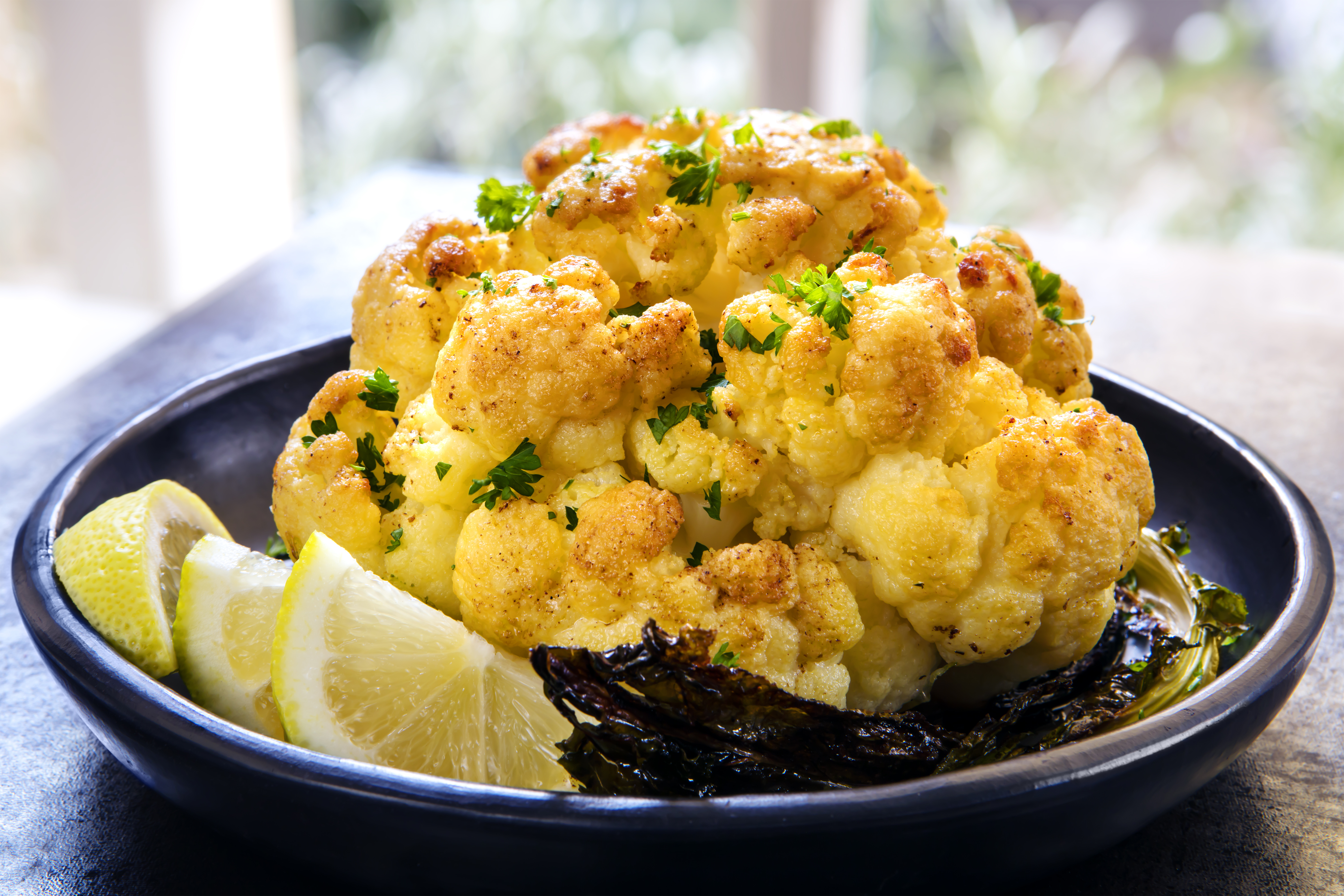Properties of cauliflower: benefits and ways of cooking it
We tell you about the properties of cauliflower. Discover its benefits and the tastiest recipes to get the most out of this typical autumnal vegetable
fresh food
Share

Benefits of cauliflower
Water is the main component of this vegetable from the Brassicaceae family, which, together with the low carbohydrate, sugar and fat content, makes this a very low-calorie food. In addition, it is considered to be a good source of fibre, as well as vitamins and minerals.
In terms of vitamins, there is a strong presence of vitamin C, which has antioxidant action. It is involved in the formation of collagen, bones, teeth and red blood cells, in addition to enhancing the absorption of iron from food and improving the defences against infections.
Furthermore, it is also rich in folic acid, which contributes to maternal tissue growth during pregnancy and is a source of vitamin K and B6. Vitamin K helps normal blood clotting and keeping bones healthy, whilst B6 takes part in cellular metabolism and in the working of the immune system.
In terms of its mineral content, it is a source of potassium which contributes to maintaining a normal blood pressure.
How to cook cauliflower
Cauliflower is quite easy to prepare and doesn’t require much cooking time. It is also a vegetable with a mild taste which combines very well with other stronger tasting ingredients such as, for example, cod, ham, garlic shoots or even together with other vegetables, it enables you to make a large number of healthy recipes.

Before starting to cook it, the outer leaves and stalks at the bottom should be removed and it should be washed thoroughly in cold water.
• Bolied: Cooking or boiling cauliflower is one of thesimplest methods. The cauliflower can just be cut into florets and added toplenty of water. The cooking time willdepend on the size of the florets and will vary between 6-8 minutes if they aresmall and 12-14 minutes if they are larger florets. To prevent the smellproduced by cauliflower when it is being cooked, you can add 2 tablespoons oflemon juice or vinegar during cooking and just cook it until is soft and “aldente”.
• Steamed: By steaming it, you preserve its texture and properties better than if you boil it. You need a saucepan that has a steamer insert. The method is simple, half fill the saucepan with water so it doesn’t quite reach the insert, place on a high heat with the florets of cauliflower in the insert and cover with the lid. The cooking time is the same as when you boil it and varies depending on the size of the florets.
• Microwaved: with this technique you can get the same effect asboiling or steaming in a few minutes. Separate the cauliflower into florets andplace them on a microwavable dish. For 500 g of cauliflower, 6-8 minutes at600W power will be enough. You can pause halfway through cooking to stir it.
• Raw: Cauliflower can be eaten raw. You can takeadvantage of the smaller florets for salads or they can be served as a snackdressed with vinegar or lemon and different spices and/or herbs. They can alsobe grated to obtain a ‘false’ couscous or rice, often called cauli-rice.
• Griddled: This method of cooking takes advantage of theirtenderness and crunchy texture and, there are no bad smells. With a frying panor griddle, add a very small amount of oil and, when it is hot, add the floretsof cauliflower and continue to turn them over until they are a golden colour onboth sides.
• Fried: Heat oil in a deep-frying pan or deep fryer anddivide the cauliflower into medium sized florets. When the oil is hot, immersethe cauliflower into the oil and leave it to fry until the surface is golden.Remove from the oil, drain well and place on a piece of kitchen paper.
• Baked: Baked cauliflower is tasty if you leave it to brownlightly. You can place a large piece on an oven tray, or just the florets,brush lightly with olive oil and place in a pre-heated oven between 180 and200ºC depending on the result you want to achieve. If you want a very soft and lightlygolden cauliflower,180ºC for 12-14 minutes, or until you see it starts tobrown. If you want it golden and crispy, 200ºC for 8-10 minutes.
From our website to your kitchen
Find more recipes here






